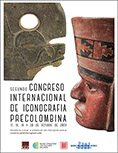Zea E-Books

Segundo congreso internacional de iconografía precolombina. Barcelona, 2023. Actas.
Date of this Version
2023
Document Type
Article
Citation
Publicado en Segundo congreso internacional de iconografía precolombina, 2023. Actas. Victòria Solanilla Demestre, editora. Lincoln, Nebraska: Zea Books, 2024. doi: 10.32873/unl.dc.zea.1712
Abstract
Conocemos el rol de los textiles en los rituales y el significado de numerosos símbolos que bordan las artesanas mayas de la Península de Yucatán, no obstante, existen varios motivos de plantas medicinales bordados en los textiles que no fueron analizados. En el mes de septiembre de 2022 dio comienzo una investigación en cooperación con la joven curandera x-meno’ob de Yaxcabá, Leydi Dorantes, que cultiva más de doscientas plantas medicinales mayas en el jardín botánico que creó su abuelo, mismas que usa en rituales y también para curar. Ella nos da a conocer la relación existente entre los elementos de la naturaleza que plasman las mujeres en sus bordados y las fuerzas que las mueven. En esta nueva investigación pretendemos enfocar las plantas medicinales y animales pertenecientes a la farmacopea maya que aparecen en los textiles y que las bordadoras bordan para protegerse de los “malos aires” y “mal de ojo”. Presentamos los primeros resultados que ampliarán el conocimiento del contenido cultural subyacente en los bordados.
Mayan embroidery that protects from diseases in the state of Yucatán, Mexico. We know the role of textiles in rituals and the meaning of numerous symbols embroidered by the Mayan artisans of the Yucatan Peninsula; however, there are several motifs of medicinal plants embroidered on textiles that were not analyzed. In September 2022, research began in cooperation with the young x-meno’ob healer from Yaxcabá, Leydi Dorantes, who cultivates more than two hundred Mayan medicinal plants in the botanical garden created by her grandfather, which she uses in rituals and to heal. She makes us aware of the relationship between the elements of nature that women capture in their embroidery and the forces that move them. In this new research we intend to focus on the medicinal plants and animals belonging to the Mayan pharmacopoeia that appear in textiles and that embroiderers embroider to protect themselves from “bad energies” and “evil eye”. We present the first results that will expand the knowledge of the underlying cultural content in embroidery.
Included in
American Art and Architecture Commons, American Material Culture Commons, Art and Materials Conservation Commons, Central American Studies Commons, Ceramic Arts Commons, Fiber, Textile, and Weaving Arts Commons, Historic Preservation and Conservation Commons, Human Geography Commons, Indigenous Studies Commons, Latin American Languages and Societies Commons, Latin American Studies Commons, Museum Studies Commons, Native American Studies Commons, Other History of Art, Architecture, and Archaeology Commons, Other Languages, Societies, and Cultures Commons, Other Religion Commons, Sculpture Commons, Social and Cultural Anthropology Commons, Theatre and Performance Studies Commons


Comments
Copyright © 2023 Roberto Campos-Navarro, Leydi Dorantes, & Danielle Dupiech Cavaleri.